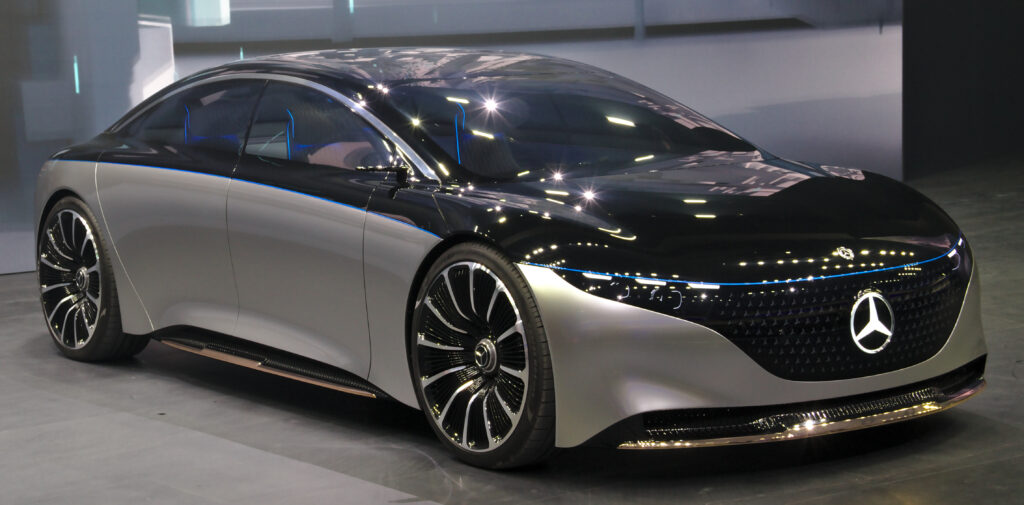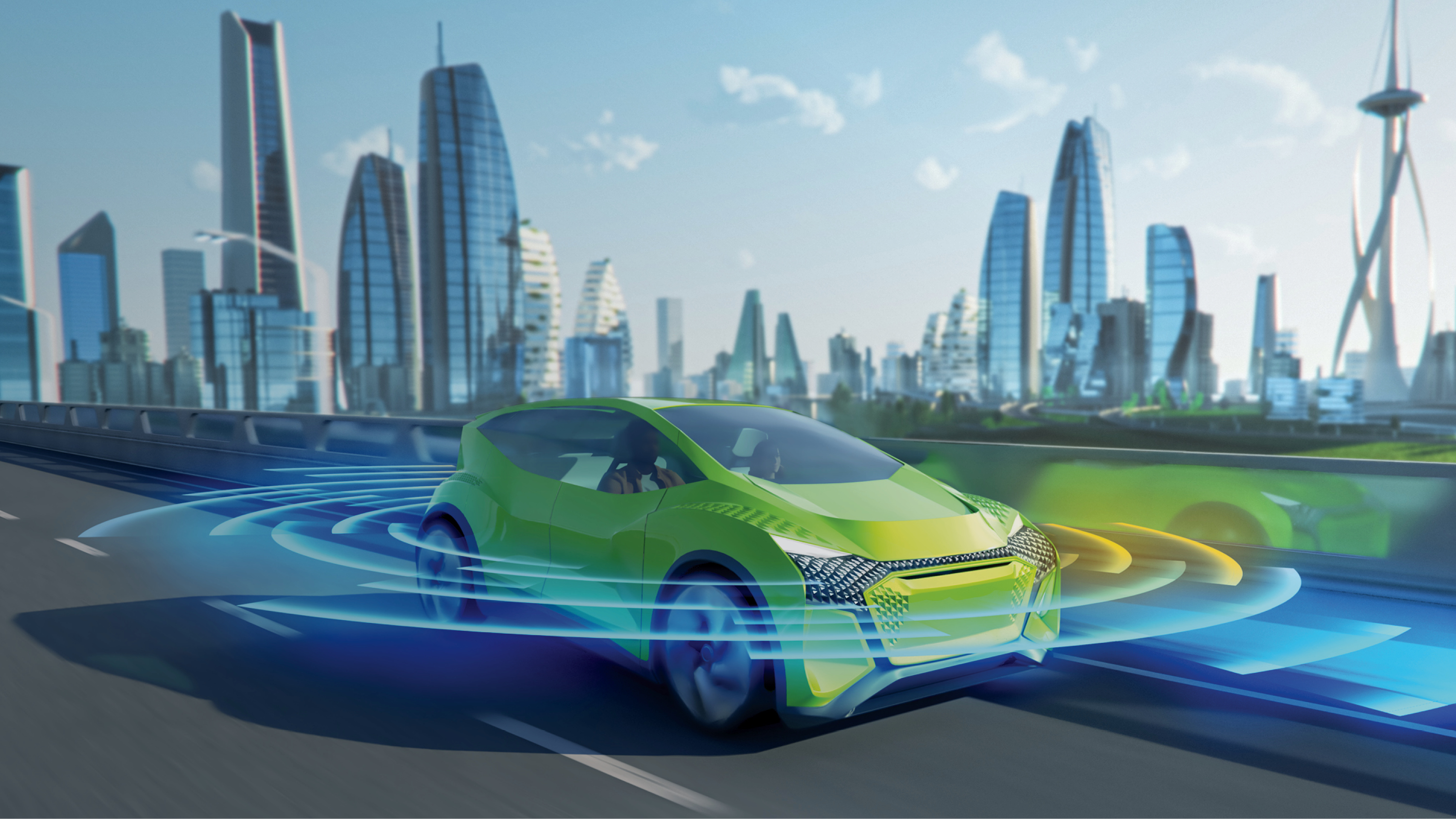
Let’s face it. Sometimes, our cars let us down. This sentiment resonates deeply with countless vehicle owners who have experienced the sting of buyer’s remorse. Manufacturers often roll out cars that, despite looking promising on paper or in showrooms, ultimately fail to live up to the hype, leaving drivers in a predicament after spending significant sums of money or committing to multi-year loans. It’s a disheartening reality that unfolds all too frequently in the automotive world, impacting individuals and families alike.
In an era where the price of both new and used vehicles continues to climb, understanding what you are truly investing in has never been more critical. Making a purchasing decision based solely on a car’s exterior aesthetics or its initial specifications can easily lead to significant trouble down the road. The superficial appeal of a vehicle can often mask deeper, more insidious issues that only become apparent after weeks or months of ownership.
Wise consumers recognize the immense value in drawing lessons from the unfortunate experiences of other vehicle owners, transforming their missteps into crucial insights for better, more informed choices. This proactive approach empowers potential buyers to navigate the complex automotive market with greater confidence and foresight, ensuring their hard-earned money is spent on a vehicle that delivers reliability and satisfaction. Our goal today is to illuminate the paths best avoided.
We are about to embark on a journey through the experiences of owners who, given the chance to rewind time, would undoubtedly choose a different path. This article will shine a light on specific vehicles that have garnered widespread dissatisfaction, detailing the common issues that have left their drivers wishing they had never made the purchase. Our aim is to provide a clear, factual, and consumer-focused guide to help you steer clear of similar pitfalls, focusing on practical advice and real-world considerations before you sign on the dotted line.
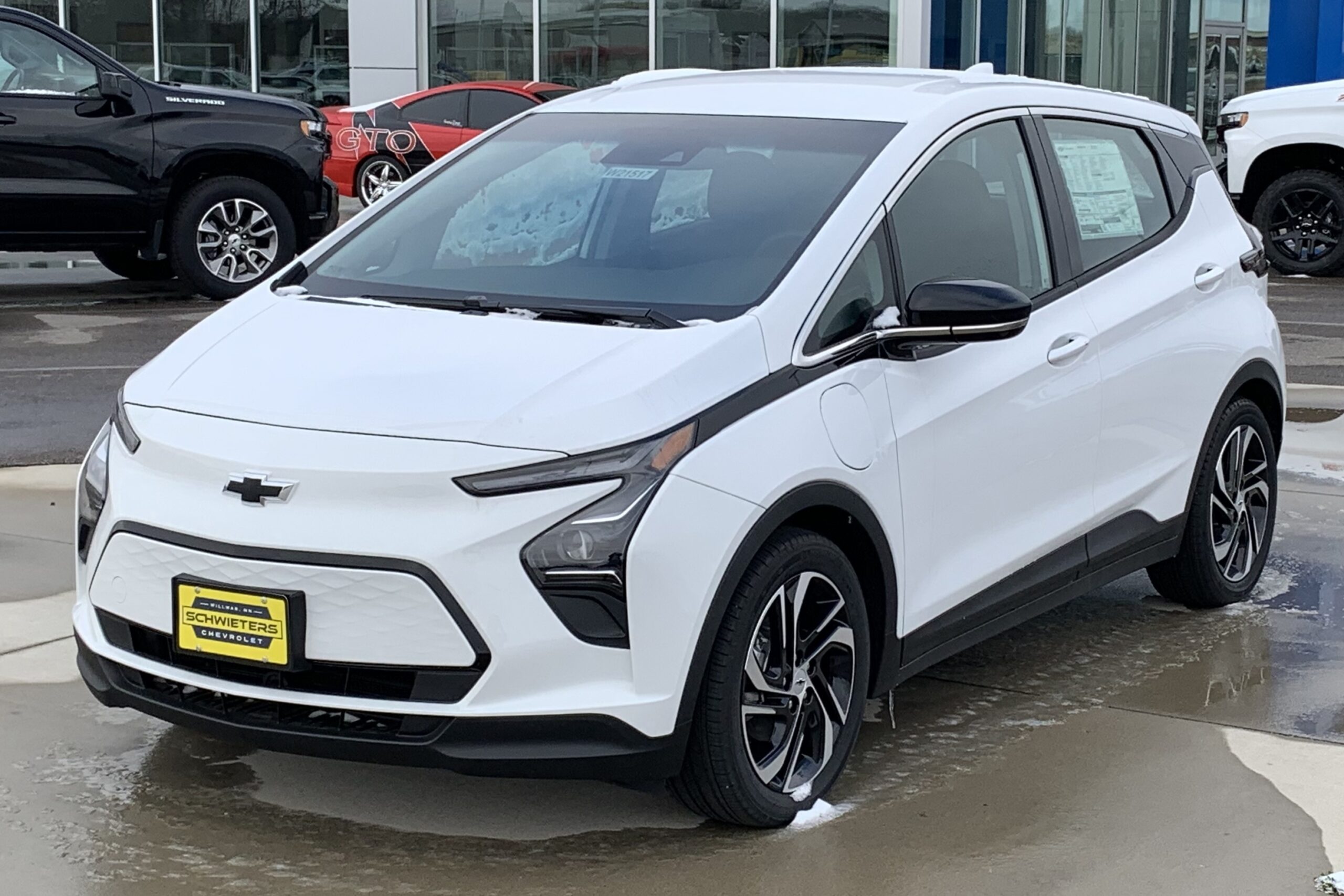
1. **Chevrolet Bolt**The Chevrolet Bolt, General Motors’ entry into the affordable electric vehicle market, initially received praise for its accessible price point and a respectable driving range. It appeared to be a compelling option for those looking to embrace electric mobility without breaking the bank. However, this vehicle quickly became plagued with significant, widely reported problems, transforming its early promise into a source of considerable frustration for many owners.
The most infamous issue associated with the Chevrolet Bolt involves its battery-related fires, a deeply serious safety concern that ultimately triggered massive recalls in both 2020 and 2021. This critical problem was meticulously traced back to the lithium-ion batteries supplied by LG, which were found to be susceptible to short-circuiting. Such an electrical malfunction could lead to severe overheating within the battery pack.
In the worst-case scenarios, this overheating could dramatically escalate, causing the entire unit to ignite into flames, posing an immediate and dire threat to vehicle occupants and surrounding property. The extensive scope and the critical nature of these recalls underscore the profound impact of this fundamental design flaw, which deeply undermined the Bolt’s initial reputation for innovation and reliability in the eyes of many consumers and safety advocates.
Beyond the critical battery fire risk, the Chevrolet Bolt also faced other criticisms regarding its overall driving and passenger experience. Owners frequently reported that the vehicle’s ride quality was merely “so-so,” failing to deliver the comfort or refinement expected in a modern electric car. Similarly, space for rear passengers was often deemed inadequate, making longer journeys less comfortable for those in the back. The handling characteristics also left much to be desired, contributing to an uninspiring and somewhat disconnected driving experience that contrasted sharply with the innovative image electric vehicles often project, thus diminishing overall owner satisfaction.
Car Model Information: 2022 Chevrolet Bolt EUV FWD LT
Name: Chevrolet Bolt EV
Caption: 2022 Chevrolet Bolt EV
Manufacturer: General Motors
Production: unbulleted list
ModelYears: unbulleted list
Class: Subcompact car
BodyStyle: hatchback
Layout: Front-engine, front-wheel-drive layout
Predecessor: Chevrolet Spark EV
Categories: 2020s cars, All Wikipedia articles in need of updating, All articles containing potentially dated statements, All articles with unsourced statements, Articles containing potentially dated statements from February 2018
Summary: The Chevrolet Bolt EV (marketed in Europe as Opel Ampera-e) is a battery electric subcompact hatchback manufactured and marketed by General Motors under its Chevrolet brand from late 2016 until late 2023, with a brief hiatus between mid-2021 and early 2022.
The first-generation Bolt was developed and manufactured with LG Corporation. Sales of the 2017 Bolt began in California in December 2016; it was released nationwide and international markets release in 2017. A rebadged European variant was marketed as the Opel Ampera-e in mainland Europe. In 2017, the Bolt was the second-best-selling plug-in car in the United States. It was named the 2017 Motor Trend Car of the Year, the 2017 North American Car of the Year, an Automobile magazine 2017 All Star, and was listed in Time magazine’s Best 25 Inventions of 2016. The Ampera-e was discontinued after 2018. By the end of 2020, GM had sold 112,000 Bolt and Ampera-e cars worldwide. The first-generation Bolt had been subject to at least three recalls due to battery fire risks.
In mid-2023, GM officials said they would discontinue the Bolt; after outcry, they announced plans for a next-generation model, which is expected to be revealed in 2025 for model year 2026.
Get more information about: Chevrolet Bolt
Buying a high-performing used car >>>
Brand: Chevrolet Model: Bolt
Price: $22,995 Mileage: 30,332 mi.
Read more about: Steer Clear: 15 Vehicles Drivers Have Regretted Purchasing Most
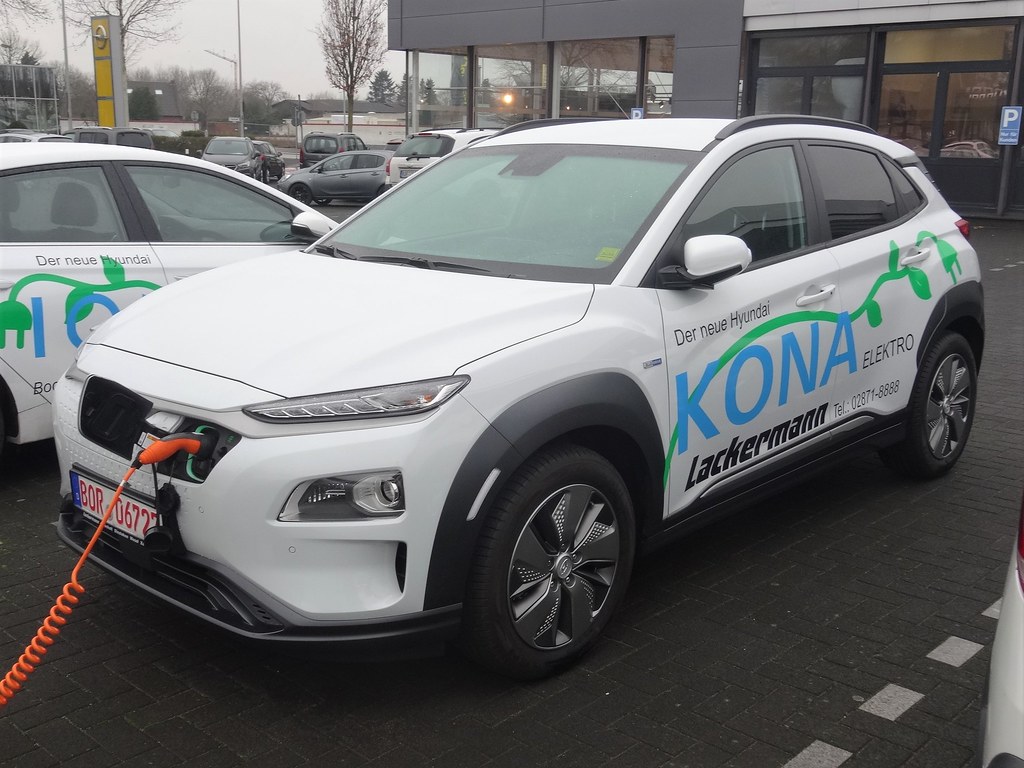
2. **Hyundai Kona Electric**Hyundai has, in recent years, justly earned considerable acclaim for its innovative and well-received electric vehicle lineup, pushing boundaries with compelling designs and advanced technology. The brand demonstrated a strong commitment to the future of electric mobility, delivering models that generally garnered positive reviews. However, even a brand on such a strong roll can encounter significant stumbling blocks, and for Hyundai, the Kona Electric stands out as a regrettable exception to their recent success.
This particular EV model, much like its Chevrolet counterpart, unfortunately found itself deeply entangled in a web of significant battery-related issues, directly impacting its safety and severely marring its reputation. The history of the Hyundai Kona Electric is notably punctuated by reports of battery fires, a deeply concerning and recurring problem that necessitated widespread intervention. This critical flaw challenged the very foundation of trust that consumers place in their vehicles, especially those adopting newer technologies.
To proactively address these severe fire risks and prevent further incidents, Hyundai initiated extensive worldwide recalls in both 2020 and 2021. These were large-scale campaigns, designed to resolve the underlying safety concerns. A core component of these recalls involved the costly and labor-intensive process of replacing battery packs in all affected EVs, a monumental undertaking intended to “nip the fire risks in the bud” and, crucially, to restore public confidence in the model.
However, for a significant number of owners, the battery issues, while undeniably grave and disruptive, represented “just the tip of the iceberg” of their dissatisfaction. The ominous phrase “Buyer beware!” often accompanies discussions of the Kona Electric, strongly suggesting that its problems extended well beyond a single, albeit critical, component failure. The context implies that owners likely encountered other reliability concerns, design limitations, or operational shortcomings that collectively detracted from the overall ownership experience, contributing to a profound sense of disappointment that even a new battery pack couldn’t fully alleviate.
Car Model Information: 2022 Volkswagen Atlas 2.0T SE
Name: Hyundai Kona
Caption: Hyundai Kona N Line (SX2)
Manufacturer: Hyundai Motor Company
Aka: Hyundai Kauai (Portugal)
Production: 2017–present
ModelYears: 2018–present
Class: Subcompact crossover SUV
BodyStyle: SUV
Layout: ubl
Categories: 2020s cars, All-wheel-drive vehicles, All Wikipedia articles in need of updating, Articles containing Chinese-language text, Articles containing Korean-language text
Summary: The Hyundai Kona is a subcompact crossover SUV produced by the South Korean manufacturer Hyundai. The first-generation Kona debuted in June 2017 and the production version was revealed later that year. It is positioned between the Venue or Bayon and the Tucson in Hyundai crossover SUV line-up. The battery electric version called the Kona Electric (or Kona EV) was first launched in South Korea during the first half of 2018 and rolled out gradually worldwide afterwards.
Get more information about: Hyundai Kona
Buying a high-performing used car >>>
Brand: Hyundai Model: Kona Electric
Price: $21,999 Mileage: 44,961 mi.
Read more about: 10 SUVs That Hit 40 MPG Highway—And They’re Not Even Hybrids
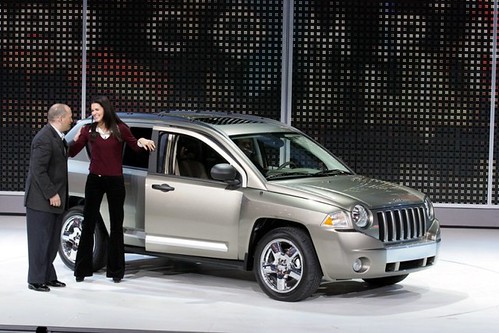
3. **Jeep Compass**The Jeep Compass, initially positioned as a versatile compact SUV, aimed to offer consumers a practical vehicle imbued with the spirit of the iconic Jeep brand. However, for a considerable number of owners across various model years, this vehicle has proven to be far from the smooth and dependable daily driver they anticipated. Instead, it has developed a notorious reputation for being a source of persistent headaches and significant inconvenience, culminating in a strong recommendation to “steer clear of this SUV” altogether if you wish to “avoid a migraine headache on wheels.”
One of the most frequently cited and deeply aggravating issues reported by Jeep Compass owners pertains directly to its transmission systems. Both the continuously variable transmission (CVT), known for its smooth yet sometimes unengaging operation, and the more traditional 9-speed automatic transmissions have been widely reported to exhibit significant and premature problems. Owners consistently complain of “herky-jerky shifting,” a tell-tale sign of mechanical distress that not only diminishes the driving comfort but also strongly indicates underlying instability within the transmission unit.
Worse still, these recurring transmission woes are not merely minor annoyances; they have a disturbing tendency to escalate to “catastrophic failure.” Such an event can render the vehicle inoperable, leaving owners with the burden of extremely expensive repair bills, often costing thousands of dollars, and prolonged periods of significant inconvenience. This kind of major mechanical breakdown can effectively strand drivers or force them into premature vehicle replacement, creating unexpected financial strain and immense frustration for families relying on the vehicle for daily tasks.
Beyond the critical transmission issues, the Jeep Compass has also been cited for “poor engine performance,” meaning it often struggles to deliver adequate power and responsive acceleration. This persistent lack of robust performance can make everyday driving feel laborious and uninspiring. Furthermore, “excessive oil consumption” has been a recurring and worrying complaint, signaling potential engine wear or internal design flaws. To compound these, “electrical system issues” are also common, leading to unpredictable problems from minor annoyances to critical failures, contributing to a comprehensive picture of unreliability.
Car Model Information: 2017 Jeep Wrangler Unlimited Sport
Name: Jeep Compass
Caption: 2019 Jeep Compass
Manufacturer: Jeep
Production: 2006–present
ModelYears: 2007–present
Class: Compact crossover SUV
BodyStyle: SUV
Layout: Front-engine, front-wheel-drive layout
Chassis: Unibody
Categories: 2010s cars, 2020s cars, All-wheel-drive vehicles, All Wikipedia articles written in American English, Articles with short description
Summary: The Jeep Compass is a compact crossover SUV, introduced in 2006 for the 2007 model year. The first generation Compass and Patriot, its rebadged variant, were among Jeep’s first crossover SUVs. The second-generation Compass debuted in September 2016 in Brazil and at the Los Angeles International Auto Show in November 2016, sharing a modified platform with the Renegade. It is positioned between the smaller Renegade and the larger Cherokee globally or the Commander in South America. The third-generation Compass debuted in May 2025, built on the STLA Medium by Stellantis, shared with other PSA Groupe vehicles.
Get more information about: Jeep Compass
Buying a high-performing used car >>>
Brand: Jeep Model: Compass
Price: $20,725 Mileage: 111,103 mi.
Read more about: Beyond the Showroom Shine: 10 SUVs That Either Defy or Succumb to Rust, A Crucial Guide for Drivers
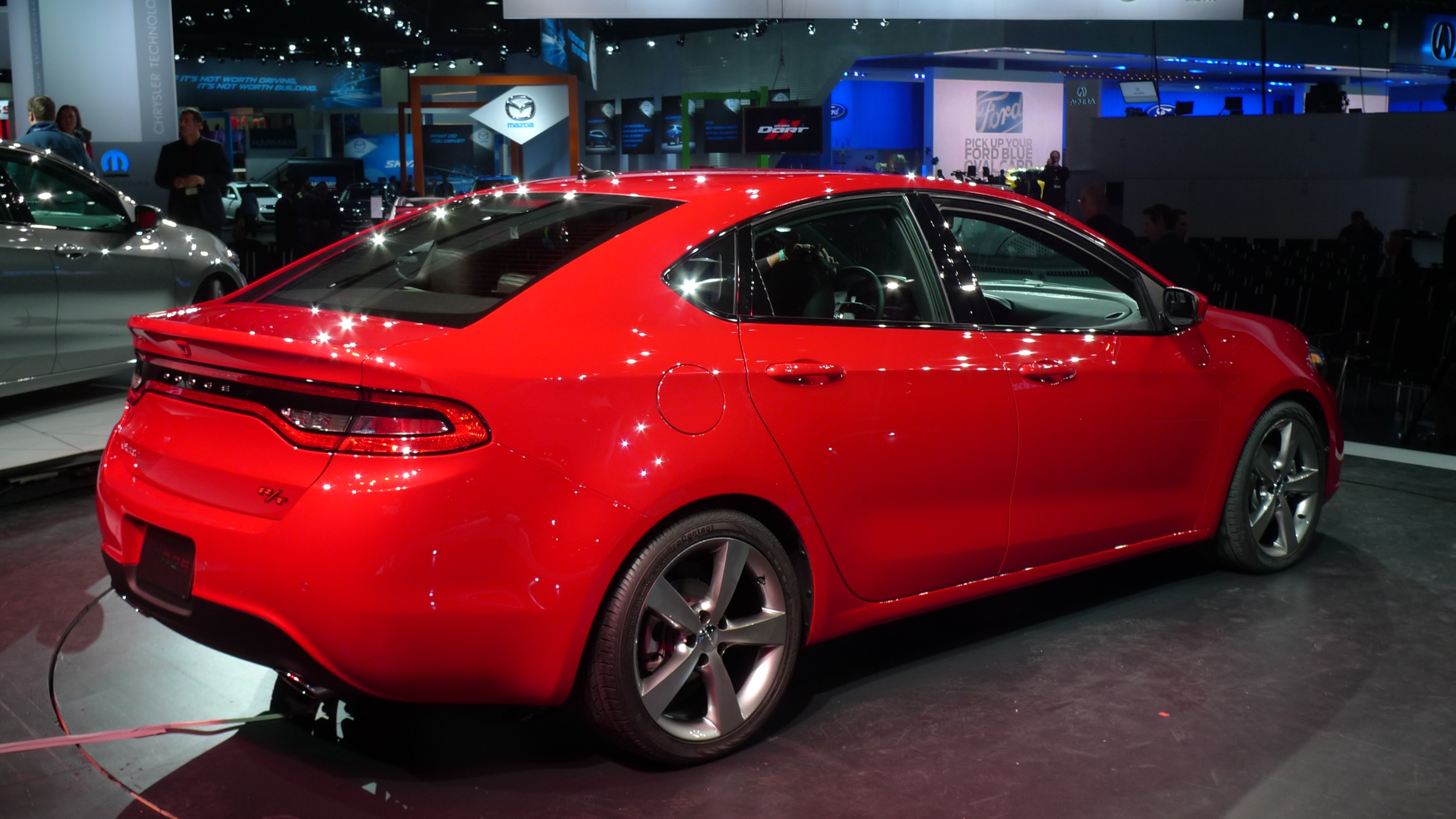
4. **Dodge Dart**The Dodge Dart, a compact sedan that entered the market with aspirations of re-establishing the brand’s presence in a highly competitive small car segment, regrettably became synonymous with problems typically associated with much larger vehicles. Far from being a nimble, efficient, and reliable everyday driver, it quickly earned a notorious reputation for having “full-size car problems,” much to the profound dismay and financial detriment of its owner base. The extensive list of complaints, spanning virtually every major component and system, makes it abundantly clear why so many owners quickly developed a deep and lasting sense of buyer’s remorse.
When considering the Dodge Dart, the central question for anyone researching its ownership experience often becomes not where to begin detailing its myriad flaws, but rather, where *not* to. The vehicle was plagued with persistent and significant issues across the board, affecting fundamental aspects of its operation and reliability. Problems were routinely reported concerning the transmission, which was notorious for its erratic behavior, rough shifts, and its disconcerting potential for premature and catastrophic failure, leading to expensive repairs and a loss of confidence.
The engine, another cornerstone of any vehicle’s performance, also frequently failed to deliver consistent power or suffered from its own set of reliability concerns, including unexpected stalls or a general lack of responsiveness. Even critical and safety-related systems such as the suspension, responsible for ride comfort and handling, and the brakes, vital for stopping power, were not immune to widespread complaints. These deficiencies contributed to a driving experience that was less than confidence-inspiring, often uncomfortable, and sometimes perceived as genuinely unsafe, collectively painting a bleak picture for owners.
The sheer volume of dissatisfaction among Dodge Dart owners is not merely anecdotal; it is statistically significant and powerfully illustrates the widespread regret associated with the purchase of this model. According to authoritative data reported by Consumer Reports, “around six in 10 buyers say they are not satisfied with the vehicle.” This exceptionally high percentage of unhappy owners is a profoundly powerful indicator that the Dart consistently fell far short of expectations, failing to deliver the promised reliability, performance, safety, or overall value that consumers sought in a compact sedan. For potential buyers today, the collective experience of these disenchanted owners offers a clear and unequivocal warning: avoid the Dodge Dart entirely.
Car Model Information: 2013 Dodge Dart Limited/GT
Name: Dodge Dart
Caption: 1966 Dodge Dart GT 2-door hardtop
Manufacturer: Dodge
Production: 1959–1976 (US market)
ModelYears: 1960–1976 (US market)
Class: Full-size
Layout: FR layout
Predecessor: Dodge Coronet#Fourth generation (1957–1959)
Related: Plymouth Valiant,Chrysler Valiant,Dodge Phoenix
Successor: Dodge Aspen,Dodge Diplomat,Talbot Tagora
Categories: 1970s cars, All articles with unsourced statements, Articles with short description, Articles with unsourced statements from December 2023, Articles with unsourced statements from May 2025
Summary: The Dodge Dart is a line of passenger cars produced by Dodge from the 1959 to 1976 model years in North America, with production extended to later years in various other markets.
The production Dodge Dart was introduced as a lower-priced full-size model in 1960 and 1961, but became a mid-size car for one model year for 1962, and was then reduced to a compact for two generations, from 1963 to 1976.
Chrysler had first used ‘Dart’ name plates on two Italian styled show cars, in 1956 and 1957, before it became a Dodge model name. The Dart nameplate was resurrected for a Fiat-derived compact car that was introduced in 2012.
Get more information about: Dodge Dart
Buying a high-performing used car >>>
Brand: Dodge Model: Dart
Price: $6,971 Mileage: 123,411 mi.
Read more about: Steer Clear: 15 Vehicles Drivers Have Regretted Purchasing Most
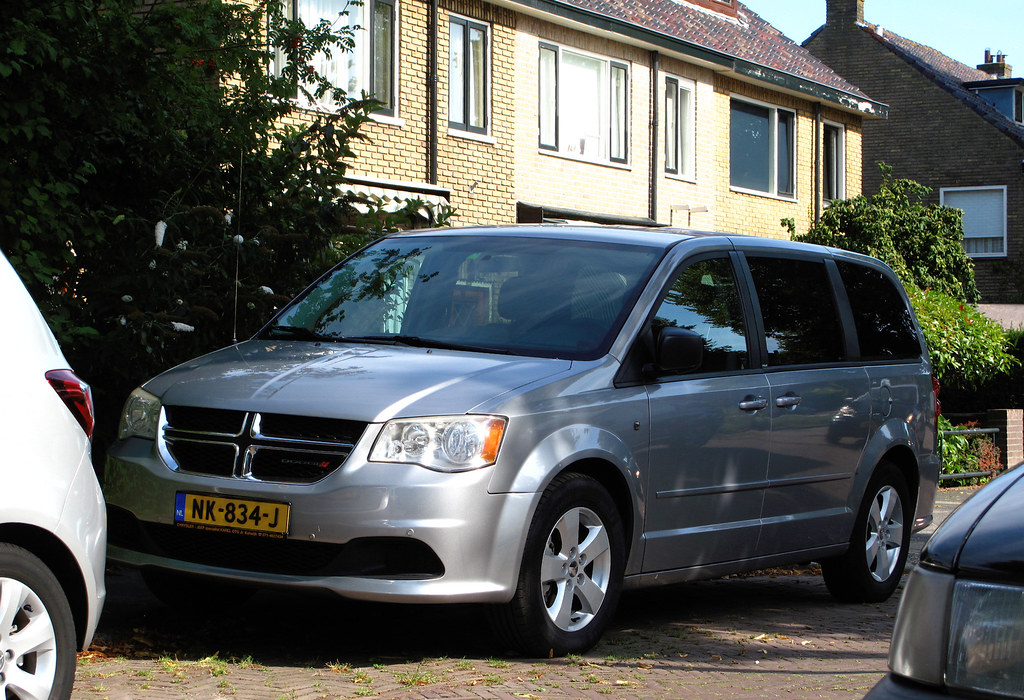
5. **Dodge Grand Caravan**For many families across America, the Dodge Grand Caravan holds a nostalgic place, conjuring images of road trips and daily school runs. Marketed as the quintessential family hauler, its spacious interior and sliding doors offered undeniable practicality. However, for a significant number of owners, the reality of living with this minivan proved to be anything but smooth, often turning those family memories into tales of automotive woe. This vehicle, despite its utilitarian appeal, developed a notorious reputation for a series of persistent and frustrating mechanical problems that deeply undermined its reliability and left many longing for a different choice.
The most glaring and frequently cited issue among Dodge Grand Caravan owners centers squarely on its transmission system. Far from offering a seamless or dependable driving experience, these minivans were prone to experiencing severe transmission failures, a critical flaw that can render a vehicle inoperable and inflict substantial financial strain. Before succumbing entirely, the transmissions often exhibited a clear pattern of distress, including concerning symptoms such as delayed gear engagement, where the vehicle hesitates significantly when shifting into drive or reverse. This is often accompanied by rough, jarring shifts that diminish ride comfort, and a worrying tendency for the transmission to slip between gears, creating a sense of instability and a distinct lack of power delivery.
Such transmission woes are not mere inconveniences; they represent fundamental operational failures that can disrupt daily life and necessitate expensive repairs. Imagine being late for an important appointment because your minivan struggles to get into gear, or experiencing frightening lurches on the highway as the transmission slips unpredictably. These experiences, unfortunately, became a common reality for many Grand Caravan owners, forcing them into premature and costly replacements or extensive overhauls that could easily amount to thousands of dollars. The sheer frequency and severity of these transmission-related complaints highlight a deep-seated reliability concern that went unaddressed across various model years, leaving owners feeling stranded and utterly frustrated by their once-trusted family vehicle.
Beyond the pervasive transmission problems, owners also consistently voiced grievances about other significant aspects of the Dodge Grand Caravan’s performance and dependability. Electrical system problems, a category that encompasses a wide array of unpredictable malfunctions, were a common complaint. These issues could range from minor annoyances like flickering dashboard lights and unreliable power accessories to more critical failures affecting essential vehicle functions, often proving difficult and costly to diagnose and repair. Compounding these electrical gremlins, many owners reported instances of heavy oil consumption, a symptom that can indicate underlying engine wear or design flaws, requiring frequent monitoring and replenishment of engine oil, and potentially foreshadowing more severe engine issues down the line.
Given this litany of mechanical and electrical frustrations, it’s hardly surprising that a resounding sentiment among former Grand Caravan owners is one of profound regret. When surveyed about their ownership experience, many openly admit that if granted a do-over, they would unequivocally choose a different vehicle. This collective sentiment serves as a stark warning to prospective buyers: while the Grand Caravan might appear to be a practical and affordable option for transporting families, the overwhelming evidence from real-world owners suggests that its operational reliability and long-term costs often outweigh its initial appeal. For those seeking dependable family transportation, the consensus from experienced owners is clear: it’s best to steer well clear.
Car Model Information: 2022 Volkswagen Atlas 2.0T SE
Caption: 2011 Dodge Grand Caravan Mainstreet
Name: Dodge Grand Caravan
Manufacturer: Chrysler Corporation,Daimler AG,Chrysler LLC,Chrysler Group LLC,FCA US LLC
Class: Minivan
Layout: FF layout,F4 layout
Production: November 2, 1983 –August 21, 2020
ModelYears: 1984–2020
Related: Plymouth Voyager,Chrysler Town & Country (minivan),Dodge Mini Ram,Chrysler Voyager,Volkswagen Routan
Assembly: Windsor, Ontario,Fenton, Missouri,Fenton, Missouri,Fuzhou
Successor: Dodge Journey,Chrysler Voyager
Categories: All-wheel-drive vehicles, All articles with unsourced statements, Articles with short description, Articles with unsourced statements from December 2017, Articles with unsourced statements from May 2009
Summary: The Dodge Caravan is a series of minivans manufactured by Chrysler from the 1984 through 2020 model years. The Dodge version of the Chrysler minivans, was marketed as both a passenger van and a cargo van (the only version of the model line offered in the latter configuration). For 1987, the model line was joined by the long-wheelbase Dodge Grand Caravan. Produced in five generations across 36 model years, the Dodge Caravan is the second longest-lived Dodge nameplate (exceeded only by the Dodge Charger). Initially marketed as the Dodge counterpart of the Plymouth Voyager, the Caravan was later slotted between the Voyager and the Chrysler Town & Country. Following the demise of Plymouth, the model line became the lowest-price Chrysler minivan, ultimately slotted below the Chrysler Pacifica.
Sold primarily in the United States and Canada, the Dodge Caravan was also marketed in Europe and other international markets under the Chrysler brand (as the Chrysler Voyager or Chrysler Caravan). From 2008 onward, Dodge marketed the model line only as the Grand Caravan; Ram Trucks sold a cargo-only version of the model line as the Ram C/V Tradesman. The model line was also rebranded as the Volkswagen Routan from 2009 through 2014.
After the 2020 model year, the Dodge Grand Caravan was discontinued, ending production on August 21, 2020. For 2021 production, the Grand Caravan nameplate was moved to Chrysler, which used it for a Canadian-market version of the Chrysler Pacifica (in the United States, the exact vehicle was marketed as the Chrysler Voyager).
For its entire production run, the Dodge Caravan/Grand Caravan was manufactured by Chrysler Canada (now Stellantis Canada) at its Windsor Assembly facility (Windsor, Ontario). From 1987 until 2007, the model line was also manufactured by Chrysler at its Saint Louis Assembly facility (Fenton, Missouri). Since their introduction in late 1983, over 14.6 million Chrysler minivans have been sold worldwide (including export versions and versions sold through rebranding).
Get more information about: Dodge Caravan
Buying a high-performing used car >>>
Brand: Dodge Model: Grand Caravan
Price: $21,999 Mileage: 44,961 mi.
Read more about: Steer Clear: 15 Vehicles Drivers Have Regretted Purchasing Most

6. **Nissan Sentra**The Nissan Sentra has long occupied a notable position in the compact sedan market, often appealing to buyers seeking an affordable and fuel-efficient option for daily commuting. While some model years have proven to be dependable workhorses, a particularly problematic period emerged between 2013 and 2019, during which the Sentra became synonymous with reliability nightmares. This specific generation of the vehicle garnered a reputation for persistent and deeply frustrating mechanical issues that turned many owners’ initial satisfaction into significant buyer’s remorse, making it a model range that experienced owners emphatically advise against purchasing.
The notorious heart of the Sentra’s troubles during these model years was its continuously variable transmission, or CVT. This advanced transmission, designed to offer smoother acceleration and improved fuel economy, instead became a significant “thorn in the side” for countless Sentra owners. The CVT in these vehicles was widely reported to suffer from a range of severe operational flaws, including a tendency to overheat, especially during extended drives or in warmer climates. This overheating could not only reduce the transmission’s efficiency but also lead to accelerated wear and, ultimately, premature failure, leaving owners with hefty repair bills and prolonged vehicle downtime.
Beyond overheating, the problematic CVT also manifested in a deeply unpleasant and inconsistent driving experience. Owners frequently complained of “jerky acceleration,” where the vehicle would lurch and hesitate rather than accelerating smoothly, making city driving particularly aggravating and highway merging potentially hazardous. This was often accompanied by a noticeable “shuddering” sensation, indicating internal issues within the transmission that undermined both driver confidence and passenger comfort. Such erratic behavior not only diminished the joy of driving but also raised serious concerns about the vehicle’s long-term mechanical integrity, forcing many to question the wisdom of their purchase.
Adding to the laundry list of issues, the Nissan Sentra from 2013 to 2019 also experienced recurrent problems with engine stalling. This is a critical safety concern, as an engine stalling unexpectedly can lead to a sudden loss of power and control, especially dangerous at higher speeds or in heavy traffic. Furthermore, this generation of the Sentra was subject to numerous and widespread recalls, spanning a variety of crucial safety components. These included significant campaigns related to the vehicle’s airbags, which are vital for occupant protection in a collision, as well as recalls concerning seatbelts and the braking system—components absolutely critical for vehicle safety and control. The sheer breadth of these safety-related recalls further underscores the systemic reliability issues inherent in these particular Sentra models.
For any consumer considering a used Nissan Sentra, the overwhelming consensus from previous owners and industry data points to a clear recommendation: exercise extreme caution, particularly with models from 2013 to 2019. While the initial purchase price might seem attractive, the potential for costly transmission overhauls, persistent engine issues, and unresolved safety concerns makes these vehicles a risky proposition. Learning from the regrettable experiences of others can save prospective buyers from significant financial burden and daily frustration, ensuring their hard-earned money is invested in a vehicle that offers genuine reliability and peace of mind rather than a consistent source of automotive headaches.
Car Model Information: 2010 Nissan Sentra 2.0
Name: Nissan Sentra
Caption: 2021 Nissan Sentra SR (B18; Canada)
Manufacturer: Nissan
Aka: Nissan Sunny
Production: 1982–present
Class: Subcompact car
Predecessor: Nissan Sunny#B310
Categories: 1990s cars, 2000s cars, 2010s cars, 2020s cars, All Wikipedia articles written in American English
Summary: The Nissan Sentra is a series of automobiles manufactured by the Japanese automaker Nissan since 1982. Since 1999, the Sentra has been categorized as a compact car, while previously it occupied the subcompact class. Until 2006, Sentra was a rebadged export version of the Japanese Nissan Sunny, but since the 2013 model year, Sentra is a rebadged export version of the Sylphy. The Sentra nameplate is not used in Japan. Many other countries in Latin America sell their versions of the Sunny as the Sentra. In Mexico, the first three generations of the Sentra were known as the Nissan Tsuru (Japanese for crane), and the B13 model was sold under that name until 2017, alongside the updated models badged as Sentra.
In North America, the Sentra currently serves as Nissan’s compact car, despite being rated as a mid-size car by the EPA due to its interior volume since the 2007 model year. While previous Sentras were subcompacts, the Sentra has grown over the years, with the Nissan Versa having replaced the Sentra in the entry-level area.
The Sentra name was created for Nissan by Ira Bachrach of NameLab, and Bachrach describes the origin as “Nissan wanted consumers to understand that it was quite safe even though it was small. The word Sentra sounds like central as well as sentry, which evokes images of safety.”
Get more information about: Nissan Sentra
Buying a high-performing used car >>>
Brand: Nissan Model: Sentra
Price: $7,228 Mileage: 89,998 mi.
Read more about: Steer Clear: 15 Vehicles Drivers Have Regretted Purchasing Most
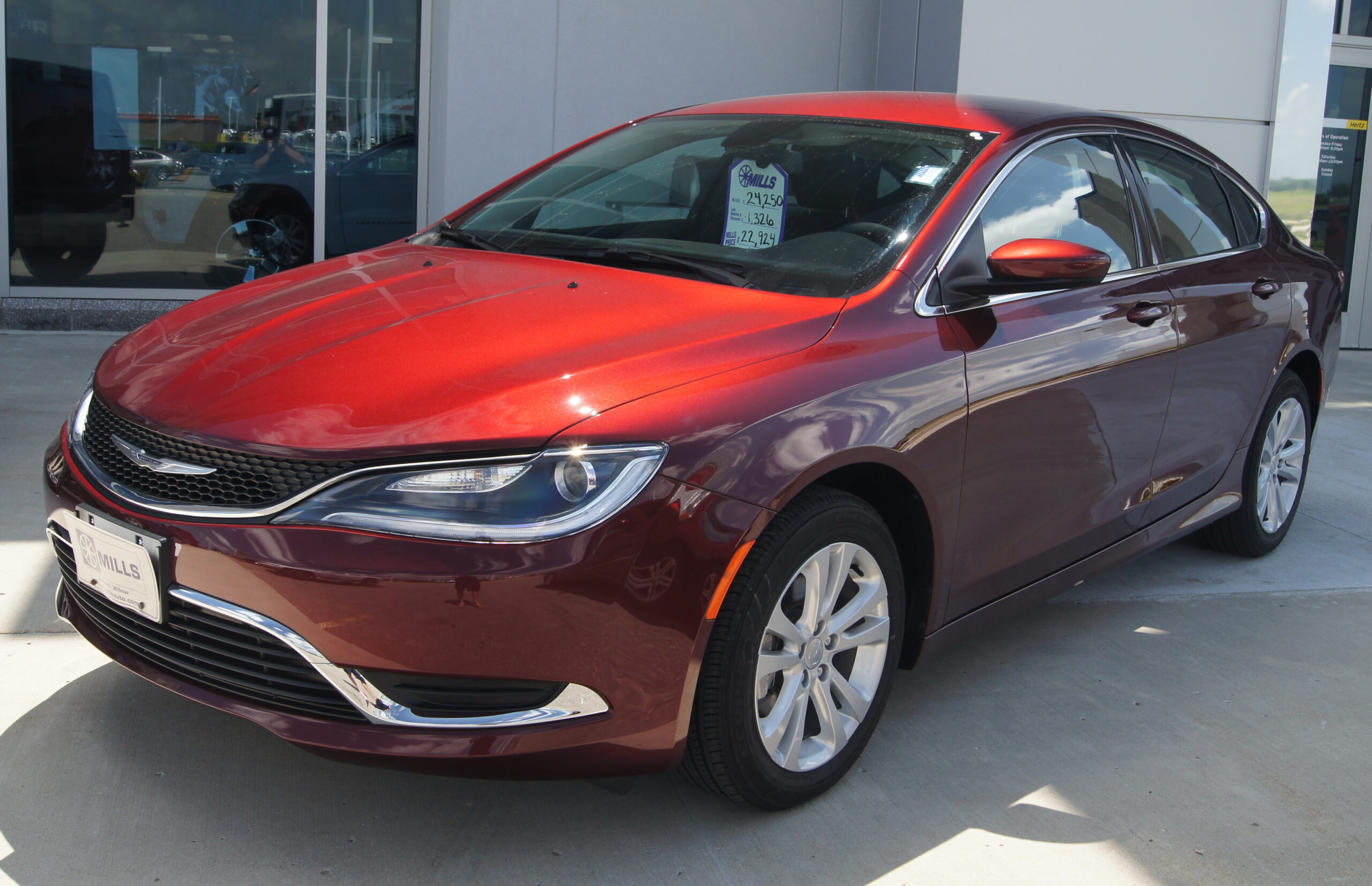
7. **Chrysler 200**The Chrysler 200, produced between 2011 and 2017, was an ambitious attempt by the brand to capture a share of the competitive mid-size sedan market, aiming to offer a blend of style and everyday practicality. However, this aspiration quickly dissolved into a reality of profound and widespread reliability issues that left a considerable number of owners feeling deeply dissatisfied and ultimately regretting their purchase. The car became notorious for a host of mechanical and operational problems that significantly detracted from its ownership experience, transforming what was intended to be a reliable family sedan into a consistent source of frustration and unexpected expenses.
Among the Chrysler 200’s many reported flaws, its transmission system, particularly the 9-speed automatic transmission found in the 2015, 2016, and 2017 models, stood out as “especially problematic.” This advanced transmission, designed to enhance fuel efficiency and provide smoother gear transitions, instead became a frequent culprit for erratic and unreliable performance. Owners consistently reported issues ranging from harsh and unpredictable shifting, which severely compromised ride comfort, to a noticeable hesitation when accelerating, leaving drivers feeling a lack of responsiveness and control. Such operational inconsistencies made daily driving a chore rather than a pleasure, diminishing confidence in the vehicle’s mechanical integrity.
Unfortunately, these transmission woes often escalated far beyond mere inconvenience, frequently culminating in outright transmission failure. The prospect of such a major mechanical breakdown is a significant concern for any car owner, as it typically involves extraordinarily expensive repair costs that can easily rival a substantial portion of the vehicle’s market value. These failures often occurred prematurely, well before owners would expect such a critical component to give out, forcing them into difficult financial decisions, including whether to sink thousands into repairs or prematurely seek a replacement vehicle. This pattern of serious transmission defects fundamentally undermined the Chrysler 200’s credibility as a reliable mode of transportation.
To compound the transmission-related headaches, the Chrysler 200 also suffered from persistent and widely reported engine performance problems. Owners frequently complained about a general lack of power, making highway merging or uphill climbs feel laborious and inefficient. Beyond mere underperformance, these engines were sometimes prone to issues like excessive noise, rough idling, or even unexpected stalls, further eroding owner confidence and contributing to a pervasive sense of unreliability. These engine problems, combined with the prevalent transmission faults, painted a comprehensive picture of a vehicle with fundamental mechanical weaknesses that consistently fell short of consumer expectations for durability and smooth operation.
Ultimately, the Chrysler 200 serves as a cautionary tale in the automotive landscape. Despite its initial stylistic appeal and promises of modern engineering, its consistent and severe reliability issues across major components like the transmission and engine made it a regrettable purchase for far too many. For any consumer in the market for a used sedan, the collective experience of its former owners offers an unambiguous warning: steer clear of the Chrysler 200, particularly the model years from 2015 to 2017. Prioritizing well-documented reliability over a potentially attractive price tag will undoubtedly lead to a far more satisfying and financially sound ownership experience.
Car Model Information: 2015 Chrysler 200 S
Name: Chrysler 200
Manufacturer: Chrysler
Production: 2010–2016
ModelYears: 2011–2017
Assembly: Sterling Heights, Michigan
Class: Mid-size car
Sp: us
Predecessor: Chrysler Sebring
Categories: 2010s cars, All articles with dead external links, All articles with unsourced statements, Articles with dead external links from July 2020, Articles with permanently dead external links
Summary: The Chrysler 200 is a mid-size sedan that was manufactured and marketed by Chrysler from model years 2011 to 2017 across two generations in four-door sedan and two-door convertible (first generation only) body styles.
The 200 nameplate debuted on the 200C, a prototype hybrid vehicle shown at the 2009 North American International Auto Show in Detroit and based on the Chrysler 300. The 200C concept was engineered to accept either traditional gasoline, hybrid or full-electric powertrains.
Get more information about: Chrysler 200
Buying a high-performing used car >>>
Brand: Chrysler Model: 200
Price: $6,900 Mileage: 122,275 mi.
Read more about: Conquer the Open Road: 13 Hybrid Vehicles Delivering Over 600 Miles of Range for Unmatched Freedom
Sometimes, life is about learning from other people’s mistakes so you don’t have to repeat them. That’s certainly the case with car ownership. The seven vehicles we’ve discussed are worth skipping unless you want to roll the dice and hope your experience is the opposite of many current owners. Making an informed decision based on real-world feedback is your best defense against buyer’s remorse, ensuring your next vehicle brings satisfaction, not frustration.


